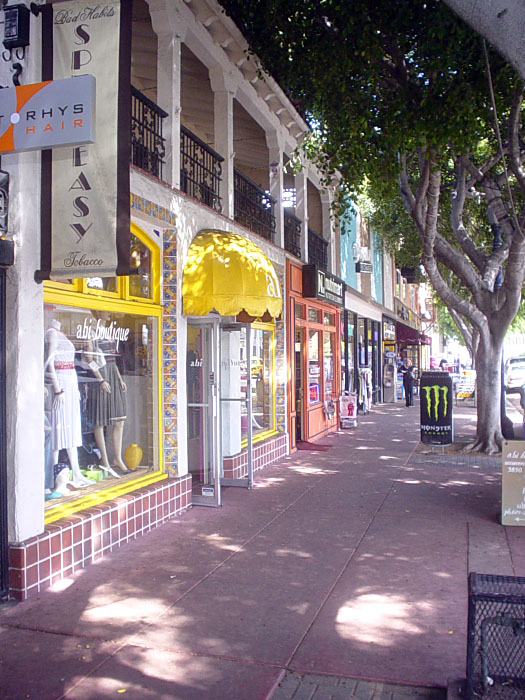A Placemaking Journal
The Future of Municipal Planning 02: Learning from Success

As the planning profession roils in the confluence of the 21st century’s Great Recession, Peak Oil/Peak Auto Travel, Millennial [Re]urbanization, and the borderline religious fervor of sustainability, I have officially declared that ours is not the same planning profession John Nolen built. So, how can planning rebuild its brand?
Build Upon Proven Success

I recommend that the profession build upon the few successful development examples that have survived the 20th century’s suburban planning experiment, which, according to James Howard Kunstler, “… is the greatest misallocation of resources in the history of the world.”
1. Urban Design Studios
In the comment section of my previous post, where I outlined urban planning conundrums, Mitchell Austin described the success of his Florida city, Punta Gorda’s, Urban Design Division. Their Design Studio works directly with project applicant processes, the long-term Capital Improvement Program, and the public to shape its policies and regulations. All with a “how do we get to ‘yes,’” attitude, this involves a Planning Department that rolls up its sleeves, draws plans, and expertly speaks with elected officials, developer moguls, and local citizens.

Punta Gorda’s example is mindful of Nathan Norris’ long-time advocacy for Design/Development Studios. Nate cites the Design Studio work Rick Bernhardt founded in Nashville, TN, and Chad Emerson’s Department of Development Design Studio in Montgomery, AL, as models of success. And, we all see that New York and Chicago are leading the nation in planning for healthy and active lifestyles funded by innovative revenue generating mechanisms.
It appears that process/policy-based Urban Planning, which primarily regulates private land, is morphing into regulatory/place-based Urban Designers responsible for addressing social issues (public health, social equity), economic issues (cost of services, return on infrastructure investments), and environmental issues (from natural land preservation to development that improve our quality-of-life). As generalists, Urban Designers implement tactical interventions, long- and short-term planning, mobility, architecture, engineering, and environmental plans. Their 3-dimensional, human-scaled perspective facilitates a break from more conventional, 2-dimensional, top-down, Land Use-based planning of the past and moves us towards cultivating more livable places.
2. Reference New Data
Just this week, Smart Growth America revealed their ground-breaking ‘Fiscal impact analyses of three development scenarios in Nashville-Davidson County, TN’ report. This report emphatically illustrates the inherent economic value of mixed-use, walkable development over more wasteful suburban models. Part of a forthcoming national report, which stands on the shoulders of Joe Minicozzi and Chuck Marohn, it marks the change we all said was coming.
Smart Growth America’s report is an objective database for decision-makers to reference how expert, short- and long-term planning for complete, compact and connected neighborhoods generates real economic revenue, and increases all of the social/environmental value that reducing our dependency upon automobiles can bring. Importantly, the findings in this report aren’t based on subjective, ‘feel-good,’ ‘just-trust-us,’ top-down directives (the kind that literally beg conspiracy theorist to fret about planners). The only item I find missing from the report are compelling graphics that visually affirm the following points:
- The market has decidedly changed from building conventional suburbia to producing legitimate urbanism;
- Economic cost-efficiency of urbanism generates greater tax revenues in an age of austerity, and;
- Good urban design creates real cultural, social and economic value.
Now is the opportunity for planners to respond to market/value shifts and plan the region, city, neighborhoods, blocks and lots with place-proven urban tools, which are NOT the same tools that have been building suburbia over the past 50 plus years. But, as change is a risky endeavor, a call for ‘change’ inspires fear of the unknown. Therefore, relying upon new urban design tools that built the models being tested by hard data will more predictably guide citizens and cities through this cultural shift.
Epilogue
Taking an Urban Design approach to municipal planning is a means to leveraging economic-value ends. However, this has consequences and we must be mindful of the results of historic trends, such as City Beautiful, Urban Renewal, and Watershed Planning. An ‘economically-based urban design’ approach will take us towards:
- Capturing latent economic value in Land Use decisions.
- Social Equity in local municipalities once we determine haves/have nots economically.
- New civic facilities for walkable, bikeable places as we continue to lose Post Offices and Libraries. We will require more accessible public restrooms for all of these walkers/bikers now strolling our streets and parks.
–Howard Blackson
If PlaceShakers is our soapbox, our Facebook page is where we step down, grab a drink and enjoy a little conversation. Looking for a heads-up on the latest community-building news and perspective from around the web? Click through and “Like” us and we’ll keep you in the loop.








